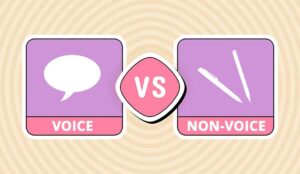A big part of a contact centre supervisor’s job is making sure their team is okay. That may sound obvious, but it’s a substantial task that includes supporting the team and the individuals to keep them motivated and productive.
As customer expectations rise and calls get more complex, pressure on agents continues to rise, and the supervisor’s role becomes ever more critical.
In a physical contact centre environment, the supervisor gets plenty of non-verbal cues to help them, from being able to monitor agents’ body language to having face-to-face chats over coffee, to team meetings and huddles where they can judge the mood of the team.
So, how does a supervisor make sure their team is okay when they are remote?
Reading the Cues
Stress, anxiety, and disengagement can come from a variety of areas – both home and work-related – and these issues typically prompt the kind of behavioural cues that a supervisor can watch for and address.
In a remote environment, video chat, MS Teams and Zoom meetings go some of the way to help the supervisor keep tabs on how the team is doing, but they still leave a gap.
Calls Are a Valuable Resource
The behavioural cues that a supervisor needs to watch for often show themselves in the way agents handle customer calls and the kind of language they use.
By analysing several calls, it’s possible to build up a picture of where problems exist, to identify if the problems are individual or team-wide, and to spot external triggers like changes in customer behaviour.
Analysis of call recordings has been used for some time in performance management and development, but until recently it’s been a largely manual process based on small samples of calls. This doesn’t help a supervisor who needs to understand how the team is doing day-to-day.
Now we have the technology to change this, giving the remote supervisor valuable insights from every call and closing the physical interaction gap left by the move from physical contact centres.
Voice Technology Can Support the Remote Supervisor and Their Team
We can apply voice recognition technology to analyse the words agents use and detect negative interactions, helping to flag patterns and help the remote supervisor identify issues and target appropriate action.
For example, an agent whose tone becomes more negative as the shift progresses may have an issue with their workload. If a similar pattern is seen across the whole team, it might mean they’re all getting a lot of customer calls on the same issue, causing growing frustration with having to repeatedly deal with the same query or problem.
The solution may be a check-in call with the agent, a new FAQ on the website to reduce the repetitive calls, or something in between; the important thing is that the supervisor is getting the cues they need to act.
The cues from voice analytics are different from those in a physical contact centre environment, but they have the same value in helping the supervisor to spot that something is amiss. Communicating openly with the team about the technology and how it’s there to support them helps ease its adoption.
What Next?
The transformational technology already exists to enable the move from physical to remote working contact centres. Much of the focus in this technology is on the customer or the practicalities of operating the remote environment, but we should not neglect how it supports and enables agents and supervisors too. Giving supervisors the technology to continue making sure their team is okay is a critical aspect of this.
Author: Guest Author
Published On: 17th Sep 2021
Read more about - Guest Blogs, OpenText



































